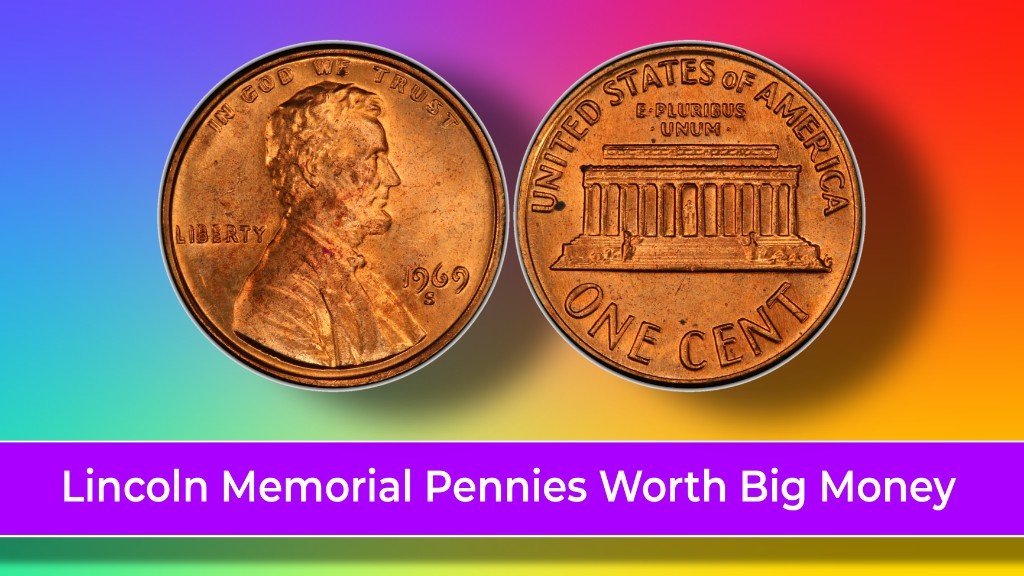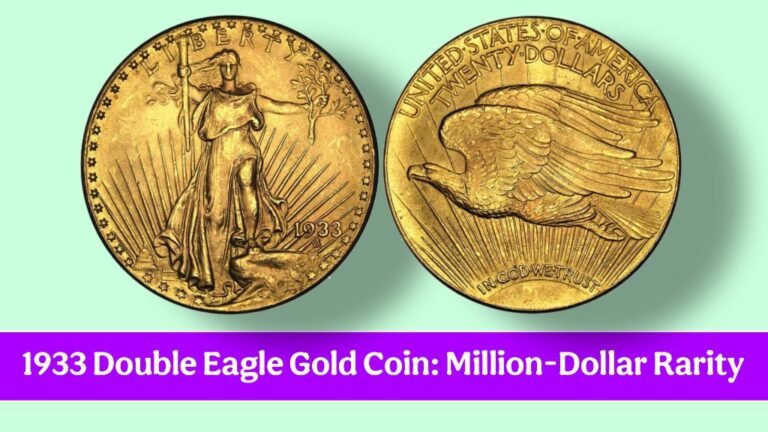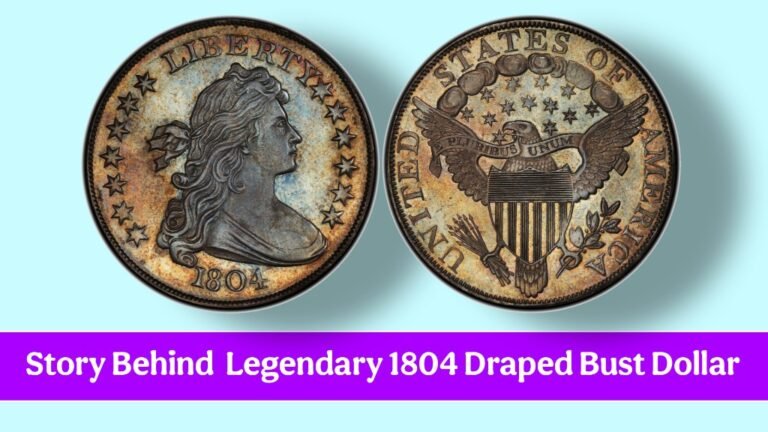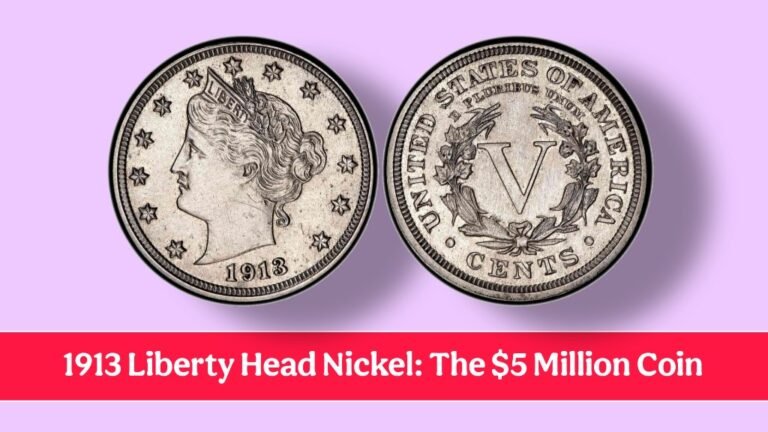Top 8 Lincoln Memorial Pennies Worth Big Money – For over five decades—from 1959 to 2008—the Lincoln Memorial Penny was the familiar face of American pocket change. Featuring the Lincoln Memorial on the reverse and Abraham Lincoln’s profile on the obverse, these pennies were minted in the billions. Most are worth exactly one cent.
But hidden among those mountains of copper (and later zinc) are a handful of extraordinary rarities—coins struck by accident, preserved by chance, or altered by fate—that today command staggering prices.
Whether you’re an avid coin collector, a curious treasure hunter, or simply someone who saved pennies from childhood, you might be sitting on a small fortune.
Below, we unveil the Top 8 Lincoln Memorial Pennies Worth Big Money—each with its own story of error, scarcity, or survival that transforms humble copper into numismatic gold.
1. 1969-S Doubled Die Obverse
The crown jewel of Lincoln Memorial cent errors, the 1969-S Doubled Die Obverse (DDO), is one of the most dramatic and valuable modern U.S. coins. Due to a misaligned hub during die creation, the design elements—including the date and lettering—were struck twice, creating bold, overlapping impressions visible to the naked eye.
Also read – 11 Most Valuable Liberty Seated Dimes of the Century
Fewer than 50 are believed to exist. The U.S. Secret Service even confiscated several during an investigation, suspecting counterfeiting—only to later authenticate them as genuine Mint errors. A specimen graded MS64 Red by PCGS sold for $54,600 in 2023. Lower-grade circulated examples still fetch $10,000–$25,000.
Why it’s valuable: Extreme doubling, low survival rate, federal intrigue, and iconic status among error collectors.
2. 1972 Doubled Die Obverse
While not as rare as the 1969-S, the 1972 DDO is far more accessible—and arguably the most famous doubled die among casual collectors. The doubling is most prominent in the date and “LIBERTY,” and can be seen without magnification.
An estimated 50,000 to 100,000 were released into circulation. High-grade uncirculated examples (MS65 Red) trade for $5,000–$7,000, while circulated specimens can still bring $500–$1,500. It’s often the first major error coin new collectors discover—making it both a treasure and a teacher.
Why it’s valuable: Easily identifiable, historically significant error, and gateway coin for new numismatists.
3. 1995 Doubled Die Obverse
The 1995 DDO is another textbook example of dramatic doubling—especially visible in the date and “LIBERTY.” It’s believed only a few thousand entered circulation before the error was caught.
A PCGS MS67 Red example sold for $2,640 in 2022. Even in MS63 condition, prices hover around $1,000. Because it’s a modern coin, many high-grade survivors exist—making it ideal for collectors seeking pristine, affordable rarities.
Why it’s valuable: Clear doubling, modern minting context, and strong demand among registry set builders.
4. 1983 Doubled Die Reverse
Unlike most doubled dies that affect the obverse, the 1983 DDR features doubling on the reverse—specifically on “ONE CENT” and the Lincoln Memorial’s steps and columns. The error is subtle but unmistakable under magnification.
Only a few hundred confirmed examples exist. An MS65 Red sold for $2,160 in 2021. This coin is especially prized because reverse doubling is rarer than obverse doubling in the Lincoln cent series.
Why it’s valuable: Reverse doubling is uncommon, and this is one of the strongest examples in the entire Memorial series.
5. 1999 Wide AM Reverse
In 1999, the U.S. Mint began transitioning to a new reverse design for the 2000 Lincoln cent, which featured wider spacing between the “A” and “M” in “AMERICA.” But a small number of 1999 pennies were accidentally struck with the 2000 die—creating the ultra-rare “Wide AM” variety.
Circulated examples start around $300, but uncirculated MS65 Red specimens can sell for $1,500–$2,000. It’s a favorite among variety specialists and often overlooked by casual searchers—making it a true “sleeper” coin.
Why it’s valuable: Transitional error, low mintage, and frequently misattributed or missed.
6. 1982 No Mint Mark Copper Small Date
1982 was a year of transition: the U.S. Mint switched from 95% copper to 97.5% zinc composition mid-year. But a small number of copper pennies were struck in Philadelphia with the “Small Date” obverse—and no mint mark. These are exceptionally rare.
Weighing 3.11 grams (vs. 2.5 grams for zinc), they’re easily identified with a scale. An MS65 Brown example sold for $1,140 in 2023. Even circulated specimens can fetch $200–$500. Beware of fakes: many zinc cents are copper-plated to mimic this variety.
Why it’s valuable: Composition transition error, diagnostic weight difference, and high copper content.
7. 1984 Doubled Die Ear
One of the quirkiest and most charming errors in the series, the 1984 Doubled Die features a clearly doubled earlobe on Lincoln’s portrait. The doubling is subtle but unmistakable under light magnification.
While not as dramatic as full-date doubling, it’s highly sought after for its uniqueness. An MS67 Red sold for $840 in 2022. Because it’s less obvious, many remain undiscovered in collections and rolls—making it a rewarding find for patient hunters.
Why it’s valuable: Distinctive localized doubling, fun diagnostic feature, and underrated by the mass market.
8. 1992 Close AM Reverse
Here’s a coin that flips the script: In 1992, a tiny number of pennies were struck with the old “Close AM” reverse die—the design used from 1959 to 1992—accidentally used in 1993 production. But a few 1992-dated cents were struck with the new “Close AM” intended for 1993. Wait—what?
Actually, correction: The true rarity is the 1992 Close AM, which should not exist. The “Close AM” (where the A and M in “AMERICA” are nearly touching) was standard until 1993. But in 1992, a very small number of proof and business strike cents were accidentally struck with the new “Wide AM” reverse. That’s the error.
Also read – 10 Canadian Coins Every Serious Collector Wants
But here’s the twist: In 2017, a single 1992-D Close AM business strike was discovered—meaning it was struck with the old reverse in Denver. It sold for over $20,000 and remains unique as of 2024. If you find another, you’ll make headlines.
Why it’s valuable: One-of-a-kind status (so far), transitional mystery, and potential for future discoveries.
What Makes These Pennies So Valuable?
It’s not age. It’s not metal content. It’s scarcity created by error or anomaly. The U.S. Mint produces coins with machine precision—but sometimes, machines fail, dies crack, hubs slip, or humans make mistakes. And when those mistakes escape into circulation, they become legends.
Key factors that drive value:
- Visibility of Error: Doubling or design anomalies visible without magnification command higher premiums.
- Survival Rate: Many errors were caught and destroyed—only a fraction escaped.
- Condition: “Red” uncirculated coins with original mint luster are worth exponentially more than brown or circulated examples.
- Certification: PCGS or NGC grading adds legitimacy and can multiply value.




